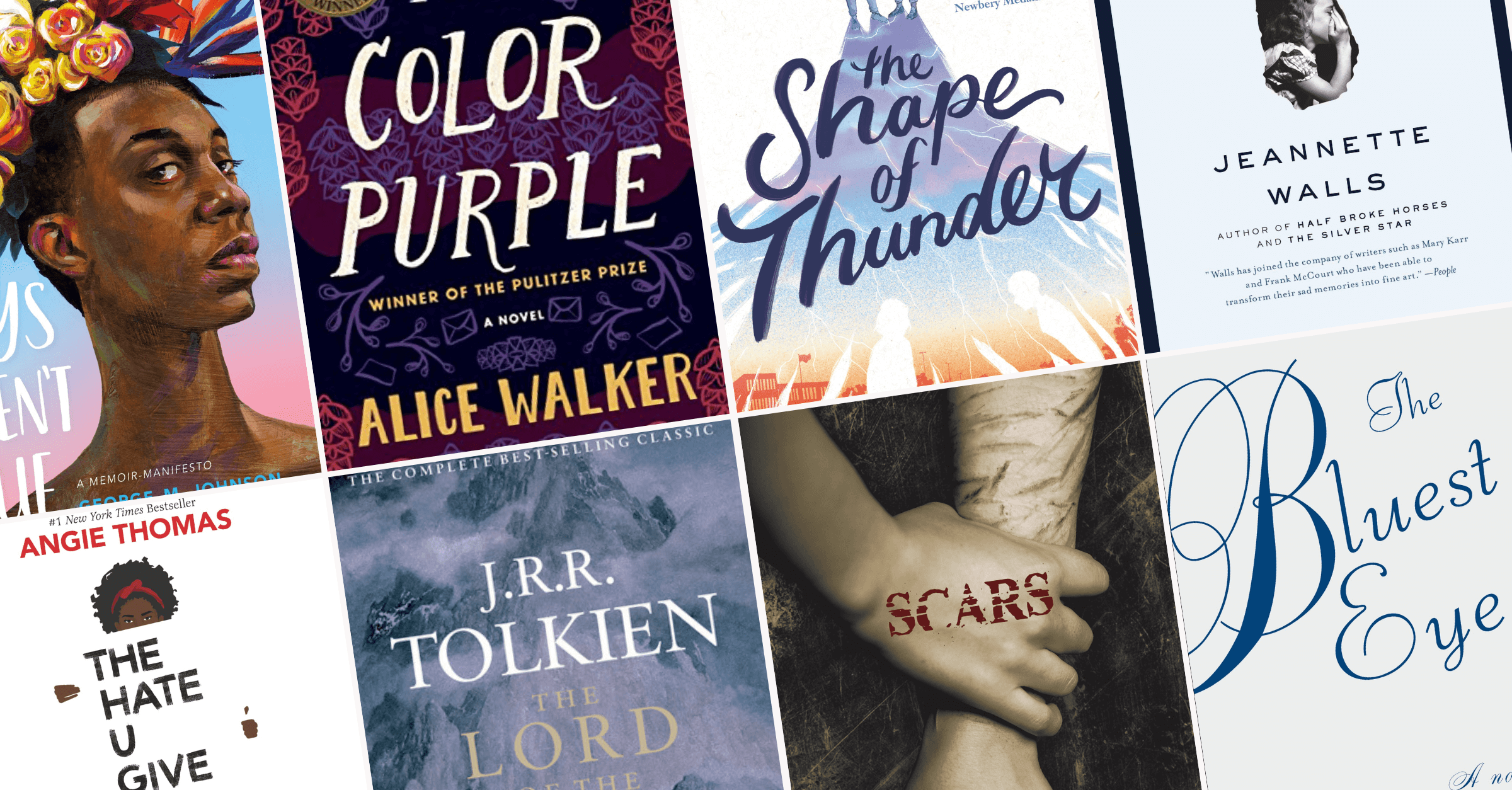Banned Books Week is the annual celebration of the freedom to read, and is typically celebrated during the final week of September. Banned Books Week brings together the entire book community — librarians, booksellers, publishers, journalists, teachers, and readers of all types — in shared support of the freedom to seek and to express ideas, even those some consider unorthodox or unpopular.
To celebrate, Books Forward team members recommend some books that have been challenged throughout the years:
“I read “The Bluest Eye” by Toni Morrison for extra credit in English class when I was in high school. I chose it from a list of books that my teacher provided, not knowing much about the story or the author. I instantly fell in love with Toni Morrison’s writing, and I still have the original copy I bought all those years ago.”
– Angelle Barbazon
“I’d recommend “All Boys Aren’t Blue by George M. Johnson,” which is a YA memoir about Johnson’s experience being a queer, Black, person growing up in the south. I read this book when I was teaching in New Orleans, and I felt like the experiences that Johnson wrote about deeply reflected some of the experiences of my students. I think this book is SO important to get into the hands of young readers especially BIPOC and queer readers!”
– Layne Mandros
“Cheryl Rainfield’s book “Scars” allows young readers to explore heavy topics like queerness, trauma and abuse through a fictional lens — all topics some might find inappropriate, like the Texas legislator who tried to have Scars and 800+ other books banned in 2021. But I think it’s great there is a book for younger readers that touches on so many sensitive issues. Ignoring issues doesn’t make them go away; it only affirms the false idea that we should hide and be ashamed of our trauma. Rainfield’s writing encourages readers to explore the tough topics, rather than ignore them, and I think that’s an incredibly positive result.
“The Color Purple” by Alice Walker is an epistolary novel that is both heartbreaking and breathtaking in the way it describes three main relationships that define the protagonist, Celie. Celie and Shug are friends who blossom into lovers; Celie and Nettie are sisters who remain deeply connected despite living a world apart; and Celie and God are brought closer as Celie sheds her patriarchal understanding of religion. A thought-provoking read, and one of the OG additions to the queer canon, “The Color Purple” is made all the richer for it’s exploration of Black love.
– Jenn Vance
“The Lord of the Rings by JRR Tolkien is not technically banned, but definitely challenged (most fantasy books are because of their depictions of magic, which are always considered satanic and occult).
“The Lord of the Rings is of course a fundamentally religious and Catholic work” – J.R.R. Tolkien
It’s kind of interesting to read that Tolkien’s work was burned at a church and his books considered “satanic.” The truth was Tolkien was a very religious man and incorporated religious themes and imagery throughout the book. He also ignited the faith of one of the most religious authors of the time: C.S. Lewis. Before writing the very Christian-based series of children’s books, The Chronicles of Narnia, C.S. Lewis was an atheist. It wasn’t until J.R.R. Tolkien discussed religion with the author that he was inspired to return to Christianity.
The Lord of the Rings has been a favorite of mine and not because of its Christian themes. At its heart, it is a coming-of-age story and a journey for more than one of its characters to step beyond their comfort zone, explore into the unknown, and with a little bit of help from their friends, fight against the demons (literal and figurative) that want to conquer this world. It’s a story I return to every once in a while because it reminds me that despite everything feeling like it’s falling apart around me, I can always be reassured that there will be hope and light beyond the darkness.
– Simone Jung
“The Glass Castle is a memoir by Jeannette Walls, and one of my favorite books that I read when in high school. Walls tells us about her dysfunctional childhood that included her free-spirit mother and fearless father, who at first, Walls didn’t realize was an alcoholic. Walls and her siblings learned to take care of themselves during their father’s stints away and their mother’s decision to avoid raising her family. The Glass Castle is now banned in several school districts due to “strong sexual situations, alcoolism, and abuse”, but it was an eye opening, inspiring story for my adolescent self.”
– Corrine Pritchett
“Some schools have started banning The Shape of Thunder by Jasmine Warga – it deals with gun violence and middle-graders trying to grapple with that, and it’s very powerful.”
– Elysse Wagner
“One of my favorite picture books to read with my kiddo is “A Day in the Life of Marlon Bundo” by Jill Twiss because it’s an adorable story about two boy bunnies falling in love and a figure in power who challenges their right to be together.
And though “The Kite Runner” by Khalid Hosseini was undoubtedly a difficult read, banning it removes an important story from the world.”
– Ellen Whitfield

Ellen Whitfield is senior publicist at Books Forward, an author publicity and book marketing firm committed to promoting voices from a diverse variety of communities. From book reviews and author events, to social media and digital marketing, we help authors find success and connect with readers.
Interested in what’s possible for your book sales and building readership? Check out our services, tell us your goals, and get a customized publicity campaign tailored just for you.


